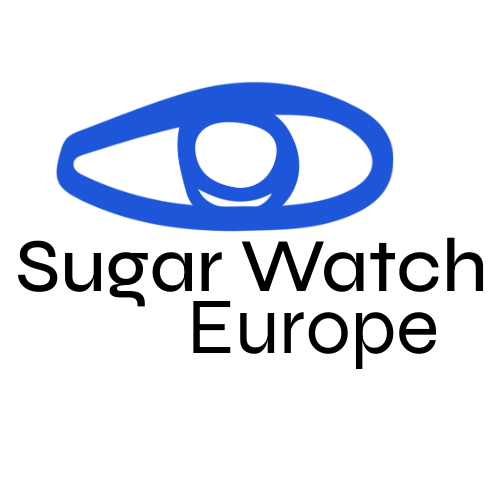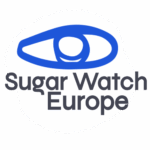Understanding added sugar
Added sugar is one of the most pervasive ingredients in the European food supply.
Today, around 74% of packaged foods contain added sugars, from bread and sauces to yogurts and breakfast cereals. Even if you rarely eat dessert, you may still be consuming more sugar than you think.
In countries such as Germany, the Netherlands, the UK and Ireland, daily intake often exceeds 90–100 g — almost four times the WHO’s recommended level.
👉 Track your sugar now
👉 Learn how to detect it
What is added sugar ?
Added sugars are any sugars or syrups put into foods during processing, preparation, or at the table.
They are different from the sugars naturally found in whole fruits or plain milk, which come with fiber and nutrients.
A sweet problem: Added sugar is everywhere
It’s easy to associate sugar with obvious sweets like desserts and sodas. But in reality, added sugars are hiding in about 74% of all packaged foods sold in supermarkets. Manufacturers add sugar not just to candies and cookies but also to many savory or supposedly “healthy” products – from breads and pasta sauces to salad dressings and yogurts. This means that even if you skip dessert, you’re likely consuming more added sugar than recommended amounts.
In Europe, average consumption reaches 90–100 g of sugar per day, and about 126 g/day in the United States – several times the safety limit set by the WHO.
Why so much added sugar?
Beyond sweetness, sugar helps preserve foods, improve texture, and maintain palatability. Unfortunately, the food industry often conceals sugar under multiple names to mask its presence. Experts have identified at least 61 different names for added sugars on ingredient lists. This makes it difficult for consumers to spot sugar at a glance, since terms like “barley malt,” “rice syrup,” or “dextrose” are all forms of sugar.
📌 Simple rule: any ingredient ending in “-ose” (fructose, maltose, sucrose) is a type of sugar.
Why Excess Sugar Represents a Major Health Risk
Overconsumption of added sugar isn’t just a dietary concern – it’s a major public health issue. A comprehensive evidence review published in The BMJ established “significant harmful links” between high sugar intake and 45 different health conditions, including obesity, type 2 diabetes, cardiovascular disease, high blood pressure, certain cancers, liver disease, tooth decay, depression, and even premature death.
In simple terms: diets rich in added sugars are generally more harmful than beneficial to health.
Metabolic impact
Unlike natural sugars in whole fruits (which come with fiber and nutrients), added sugars are typically digested and absorbed very rapidly, causing blood glucose spikes. This sudden surge forces the pancreas to release insulin; over time, chronic overload can strain the body’s insulin response and increase the risk of insulin resistance and diabetes.
High sugar intake also promotes inflammation and elevated blood triglycerides. In the long run, this biochemical stress contributes to cardiovascular disease development, while repeated blood sugar fluctuations can even affect mood and energy levels.
Hidden in Plain Sight: The Many Names of Added Sugar
If added sugars are so ubiquitous, how can consumers identify them? The key is careful label reading, but this can be tricky because manufacturers use dozens of aliases for sugar, you can find below:
Estimate your daily intake of added sugars, compare it with the World Health Organization’s recommendations (25 g/day ≈ 6 teaspoons), and identify where simple reductions can be made.
Track Added Sugar in Your Diet
Estimate your added sugar today, compare to your target, and spot easy wins. WHO suggests keeping free/added sugars below 25 g/day (≈ 6 tsp) for additional health benefits.
Add items
Items
| Item | Sugar (g) | Servings | Total (g) | Action |
|---|
Target
Tip: 1 teaspoon ≈ 4 g. WHO additional health benefits below ~25 g/day for adults.
Summary
Stay below your target for additional health benefits.
Advocating for a healthier food future in Europe.
We monitor the sugar industry, raise awareness on public health impacts, and advocate for stronger EU regulation to reduce added sugars.
2025 | Alrights reserved
by SugarWatch Europe

